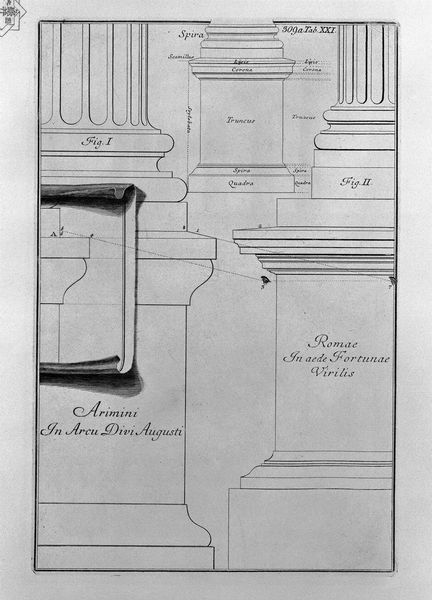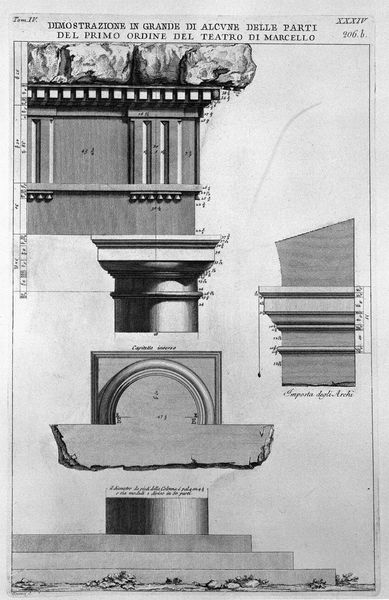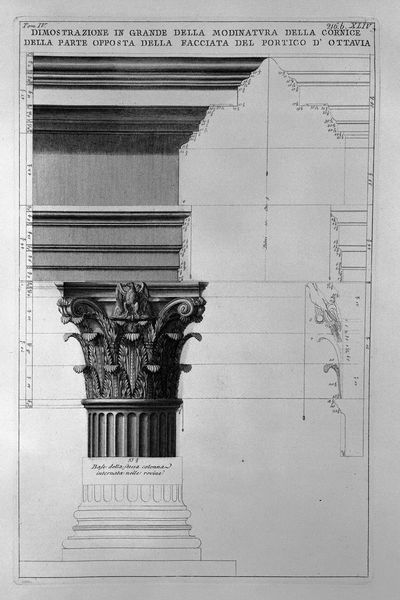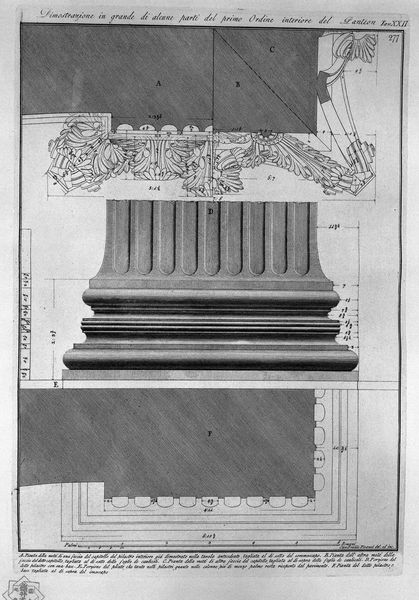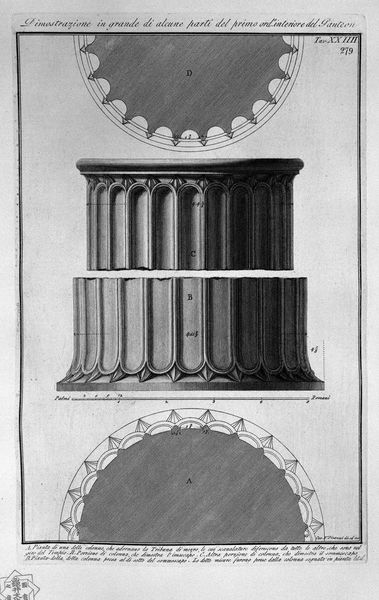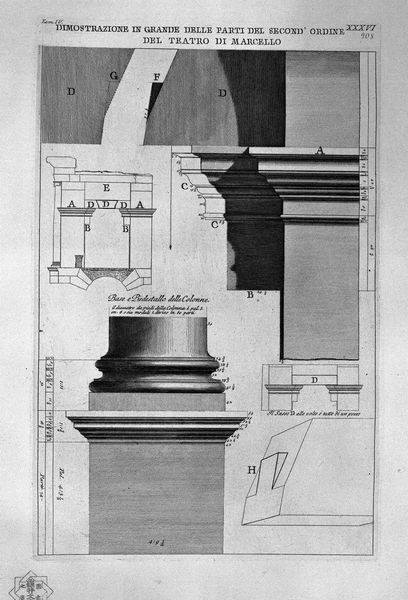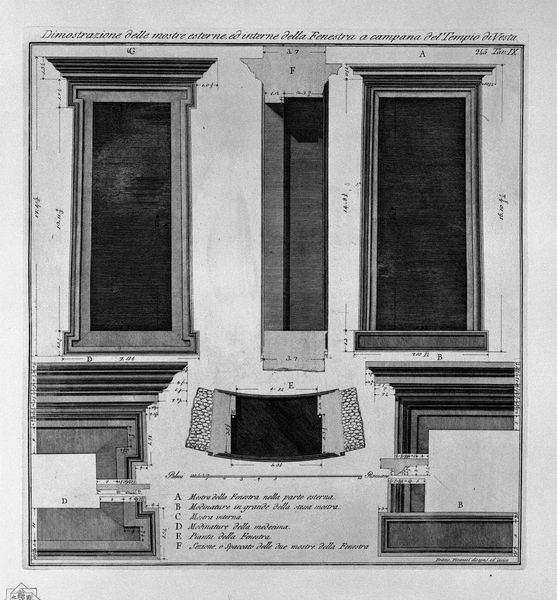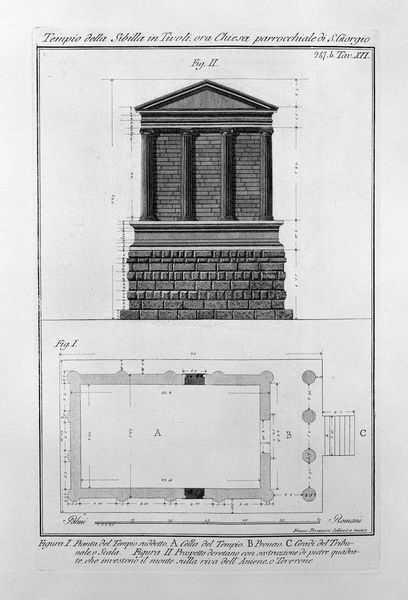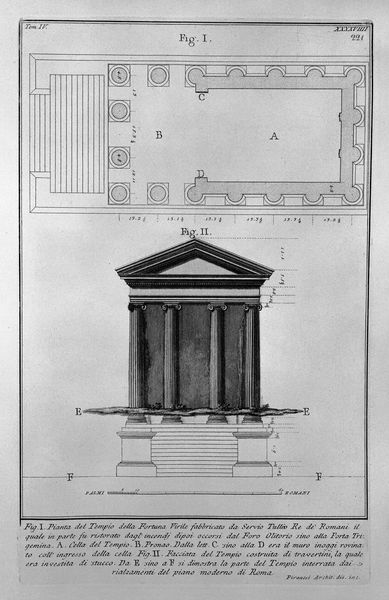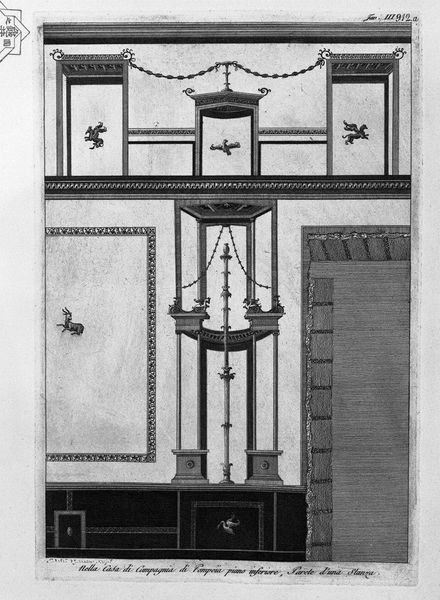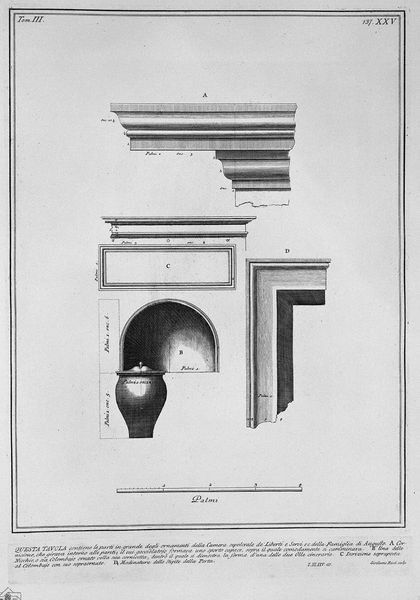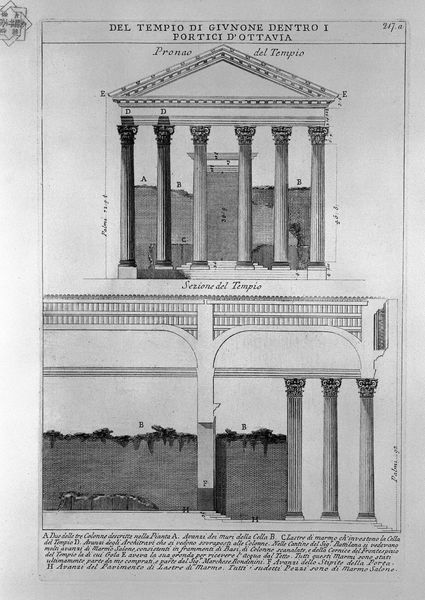
Architectural details of the Arches of Titus and Septimius Severus and the obelisk in Piazza of St. Peter
0:00
0:00
drawing, print, engraving, architecture
#
drawing
#
neoclacissism
# print
#
geometric
#
architectural section drawing
#
architectural drawing
#
line
#
architecture drawing
#
architectural proposal
#
engraving
#
architecture
Copyright: Public domain
Curator: What strikes me immediately is how clean and almost surgical this image feels. It’s precise, it's ordered, like an architect's dream realized in ink. Editor: That's an interesting take. We're looking at an engraving by Giovanni Battista Piranesi, an Italian artist known for his dramatic and detailed depictions of Rome. It presents architectural details from the Arches of Titus and Septimius Severus, as well as the obelisk in Piazza di San Pietro. He was working within a context of renewed interest in classical antiquity. Curator: Oh, absolutely. You can feel that intense Roman influence. But it's the almost obsessive attention to detail—the lines, the shading—that really grabs me. It feels like more than just documentation, almost like an act of reverence. And this geometric breakdown of classical elements certainly plays into this reverential mood. Editor: Yes, Piranesi's work walks this line between documentation and creative interpretation. During his time, Rome was very much understood through this lens of imperial glory. This artistic pursuit romanticizes that idea. The placement of these arches as a means to demonstrate the triumphs of emperors situates Piranesi's composition within those grand narratives of Roman superiority. Curator: Absolutely. I get the almost dreamlike quality, yet he anchors them so firmly in reality with his almost mathematical renderings. You could build this, and I guess that's the point! Editor: These depictions weren't just artistic exercises. They were tools of cultural memory, reinforcing specific historical narratives, sometimes uncritically perpetuating imperial ideals. I’m interested in what’s left out: people, the grit, the reality of the streets. The prints highlight only what contributes to the master narrative. Curator: That's a fair point. Still, for me, the image evokes something deeply romantic about rediscovering these historical objects. Even the simple gray wash makes it feel...alive? Editor: I agree; Piranesi’s legacy continues to spark important discussions. We just have to make sure these interpretations remain grounded in a larger and ever-changing global reality. Curator: Very true! A good reminder to engage with beauty critically!
Comments
No comments
Be the first to comment and join the conversation on the ultimate creative platform.
